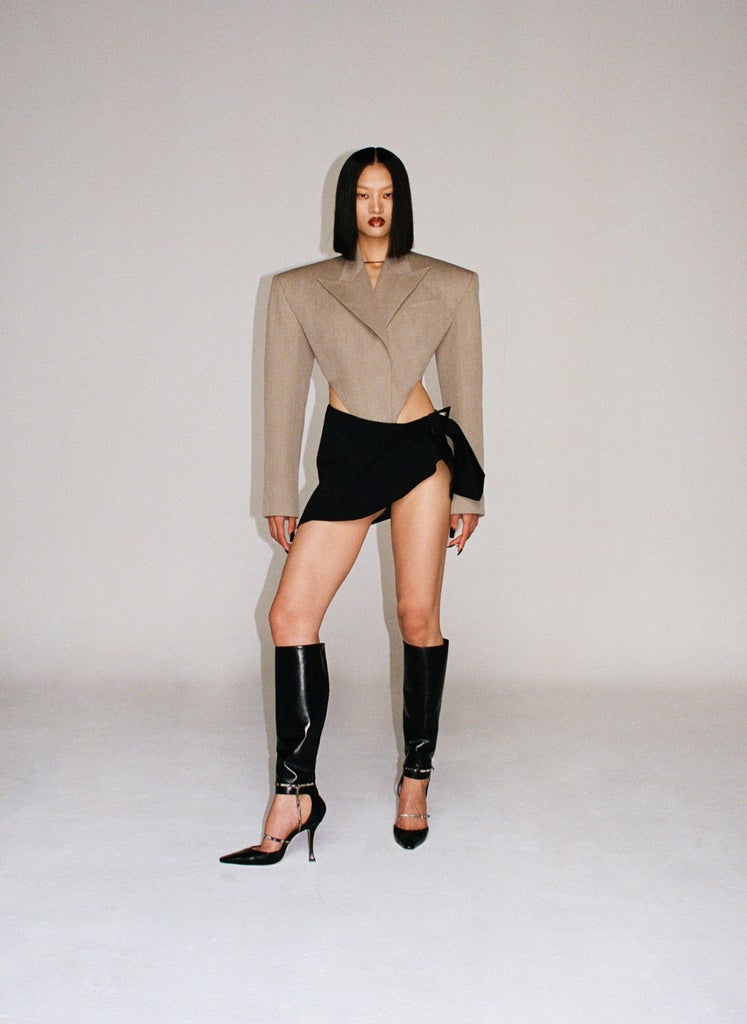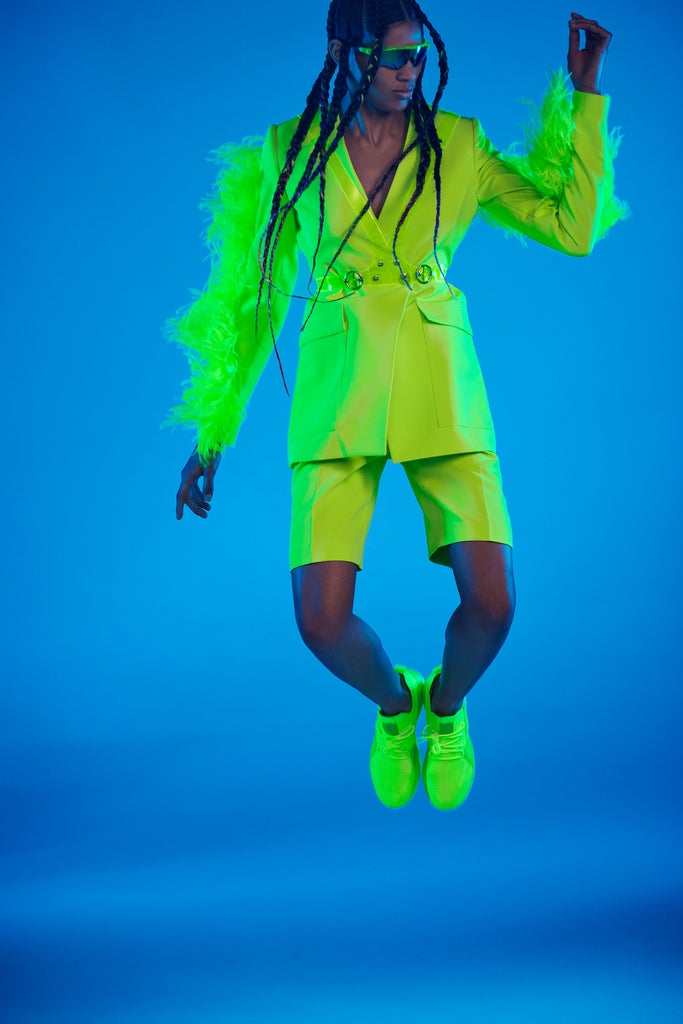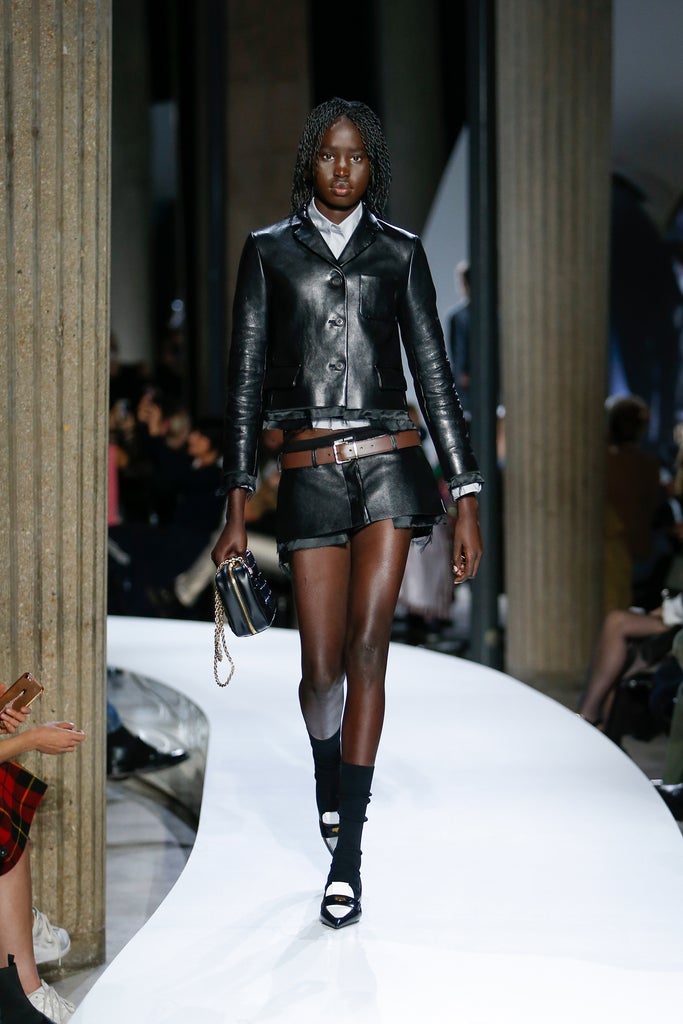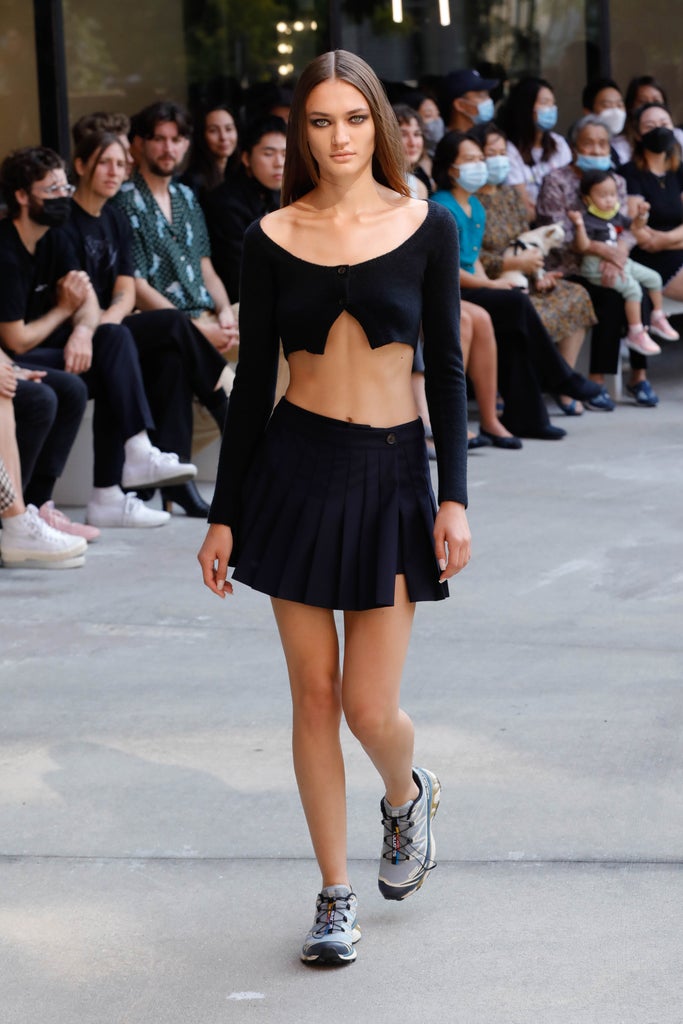After working through almost two years in a pandemic, people are quitting their jobs en masse, with more than 4 million Americans having resigned from their workplaces this past fall. Dubbed the “Great Resignation” by psychologist and Texas A&M University professor Anthony Klotz, this unprecedented event has called into question the culture of work and the changing hallmarks of a fulfilling job and career. As employees are rebelling against the nine-to-five grind they’ve previously considered as norms, these changes have rippled out into other areas of their lives. This includes clothing they’ve previously worn to perform their professional selves: Business-adjacent fashion trends like low-cut blazers, leather harnesses worn over jackets, and skirt suits so short you’ll never make it past your office entrance are rising in popularity.
According to Klotz, since the pandemic took hold, it’s become clear that the physical office culture does not work for everyone. “When I go into the office, I have to [be] fake. It’s not just about wearing comfy clothes, it’s [not] about wearing clothes where I feel like I can express myself. The norms of the workplace don’t allow that,” he says. The Great Resignation has empowered people to question that way of thinking. “As soon as you decide [to] strike out and do something different — whether it’s going to work for another company, start an entrepreneurial venture, or pursue a hobby, you travel the world, stay home with family, whatever it is — the power balance shifts,” Klotz explains. As employees feel less attached to their work, they are coming into the office in whatever feels most comfortable to them.

“Our work life isn’t what it used to be, and neither are the looks that are deemed ‘work-appropriate,’” says Morgan LeCaer, content lead at global fashion search site Lyst. “With the world tentatively heading back to the office, we quickly have had to adapt to the new nine-to-five — and doing so without sacrificing the comfort brought by loungewear over the past 18-plus months.”
The site listed “hybrid workwear” as one of the biggest trends in its 2021 Year in Fashion Report, following a 109% increase in demand for “oversized suits” in August 2021 and a jump of 87% for “wide-leg pants” in July, compared to last year. “Over the past six months, high-low workwear and generally more relaxed silhouettes have been especially popular,” says LeCaer.


According to Stitch Fix’s general manager of women’s Loretta Choy, “71% of consumers said striking a balance between style and comfort is more important to them now than before COVID-19.” The site, which provides a subscription-based shopping service, has seen an increase of 39% in searches for “back to office” and “back to work” attire from last year. But while shoppers may be headed to the office, according to Choy, they are no longer looking for the same wardrobe: “The top business comfort styles for women that are trending right now include soft oversized boyfriend fit blazers, elastic waist pants, fly knit flats, and sweater dresses.”
In response, designers have reimagined what workwear looks like beyond fashion-forward athleisure sets or designer sneakers that were trending even prior to the pandemic. In one of the most buzzed-about spring 2022 runway shows, Miu Miu showed blue button-down shirts worn with cropped blazers and leather micro mini skirt suits — preppy, risqué styling better suited for Constance Billard’s courtyard than your typical workday. But while the low-rise waistlines and barely-finished hemlines might have seemed inappropriate for the office in a pre-pandemic world, our priorities have changed. Why worry about the hemline of your skirt when the coverage of your face mask, healthcare benefits, and a way to retire are more important?
Klotz points out that another manifestation of the Great Resignation is the way people are embracing uncertainty, often quitting with no plan to follow their two-week notice. “It’s interesting that people are moving into these in-between spaces that are normally scary,” he says. While employees would typically dedicate an entire section of their wardrobe toward workwear, if there’s no guarantee that they’ll be coming back to a corporate office, what’s the point? As such, hybrid clothes that work for a variety of professional and social occasions are becoming more important to consumers.


Take, for example, Alexander McQueen’s spring 2022 collection, which showed blazer dresses with statement sleeves and suits with slits on the jacket that work just as well in a conference room as a night out. Or, Peter Do’s spring 2022 show that included a variety of monochrome suits — some with no shirts underneath — as well as silk shirts, pants, and skirts perfect for both a year-long sabbatical and a first day back at the office. Choy has seen a similar trend happening with Sitch Fix’s customers. “Many of our clients who are beginning to go back to the office are only going in a few days a week,” she says. “This means they’re requesting pieces that they can wear in an office setting but that they will also reach for on work-from-home days.”
As people are handing in their resignations, they are also shelving their business suits. Klotz says that employers will need to compromise on past practices, including office dress codes, if they hope to retain their workforce in the future.
If we are to believe runways, people will be grabbing mini skirts come springtime. But will they be heading to the office — or on their way out?
Like what you see? How about some more R29 goodness, right here?
The Leather Harness Is The Newest Workwear Trend
The New Blazer Is NSFW. Where Will You Wear It?
The ‘90s Skirt Suit Is Shorter Than Ever
from Refinery29 https://ift.tt/3ICMxc7
via IFTTT
